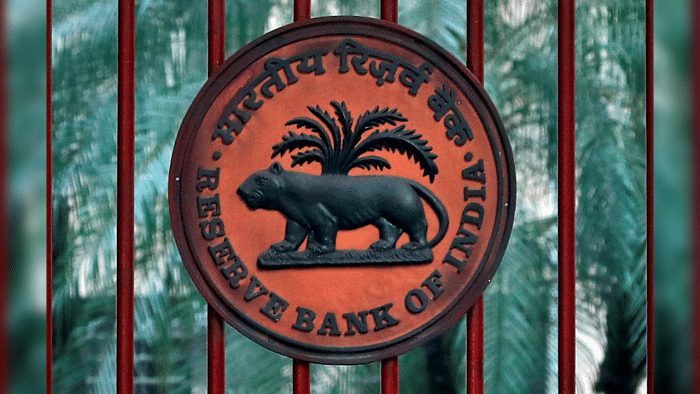
The Reserve Bank of India is now caught between the two legendary unpleasant alternatives: Scylla and Charybdis. The first is the estimated fiscal deficit (FD) of 6.4% in the growth-oriented Budget for 2022-23 and the revised estimate of FD for 2021-22 at 6.9% as against the original estimate of 6.8% of GDP. Fiscal deficit is a potential danger when economic recovery is seen in the midst of developing shortages.
Automatically follows Charybdis in the emergence of a “new pandemic of worldwide inflation.” We now have the surging demand for energy at $93.50/barrel for Brent crude and for semiconductors and electronic chips, besides the unusual shortages of shipping containers.
In addition, we have also the forward announcement of the upward change in the US Federal Reserve’s monetary policy, a sword hanging over central banks in the developing world for some time now. The central bank’s role, as the longest-serving US Fed Chairman William Martin (1951-70) once said, was to act as a “chaperone who has ordered the punchbowl removed just when the party was really warming up. If we fail to apply the brakes sufficiently, and in time, we shall go over the cliff”.
The Budget for 2022-23 gladdened the stock market. The euphoria that flowed from the no-tax but more capital expenditure on infrastructure raised stock market optimism in the next few days. Now, we have the stock market falling, as rising petroleum crude price, fears of interest rate going up in the advanced economies (the Bank of England already raised the policy rate by 25 basis points), resulting in outflows of hot money from India. Expectation of increased borrowings to finance fiscal deficits have also fanned fears of rising bond yields, too.
The time has come for the RBI to act firmly. It has to show to the jittery world that India’s central bank will not deviate from the path of maintaining price stability, the mandated goal. It has accommodated a growth-supporting stance since 2019. Now, indications on the economic horizon are clear.
Speculative investors
The speculative investors from overseas, called institutional and individual Foreign Portfolio Investors, who are known “hot money” sharks as they move in and out with the click of a mouse for interest rate differential gains, pulled out more than $3 billion between late November and December 2021. FPIs have turned net sellers this fiscal. They have been active in reducing their Indian equity and debt holdings over the last three months. The FPIs did more selling in December, more than in October and November. The result was that the rupee fell below 76 per dollar in the last week of December.
The RBI has cautioned against the fraudulent use of its liberalised remittance scheme (LRS) to send up to $250,000 overseas to trade in electronic trading platforms (ETPs). The reason is, unauthorised ETPs have emerged. They trade in currency as commodities. Buy at a cheap rate and sell when rate is favourably high. The latest available data, from September 2021, show the highest level of flow of remittances at $1.97 billion.
The news is that both FPIs and domestic funds are now net sellers: FPIs sold stocks worth Rs 1,157 crore, and domestic bondholders were also sellers with a net outflow of Rs 1,137 crore. It’s a rare occasion when both FPIs and bondholders are simultaneously attacking the money markets. One would not be able to “guesstimate” any figure at this stage as to what the net outflows would be if the RBI decides not to raise interest rates and continues to support growth recovery alongside the government’s expansionary fiscal policy.
In the absence of any pre-emptive action, capital outflows will only weaken the rupee. Depreciation of the rupee will render all imports, including of petroleum crude and other capital goods in support of growth-oriented infrastructure, more expensive. The imported inflation will then translate into domestic inflation. The costs of projects under consideration in the 2022-23 Budget as well as of those under implementation will have to be revised upwards and the budget deficits now estimated for 2021-22 and 2022-23 will all have to be revised upwards. Defending the rate by unloading foreign reserves would be futile. The selling of dollars will add to domestic money supply, unless it is efficiently sterilised by floating new bonds.
So, the challenge before RBI’s Monetary Policy Committee (MPC) is now clear. The January 2022 data on consumer price index (CPI) and wholesale price index (WPI) are scheduled to be released only on February 10, which is after the MPC meeting ends on February 9. Thus, MPC has to base its decision on CPI and WPI inflation data from December. The retail inflation target is 4% with a band of 2% on either side. The December inflation was 5.59%, close to the maximum on that band. What if inflation has been rising since then? Can RBI base its rate-setting decision of February assuming that inflation hasn’t moved up?
The RBI should now take a pre-emptive step, raising the policy rate by 25 basis points to announce to the world that the primary objective of RBI is price stability. Tinkering with reverse repo rate alone, leaving the policy rate untouched, will not be enough. Restoring the credibility of RBI is the need of the hour.
(The writer is Honorary Adjunct Professor, Amrita School of Business, Bengaluru Campus)
Check out DH's latest videos